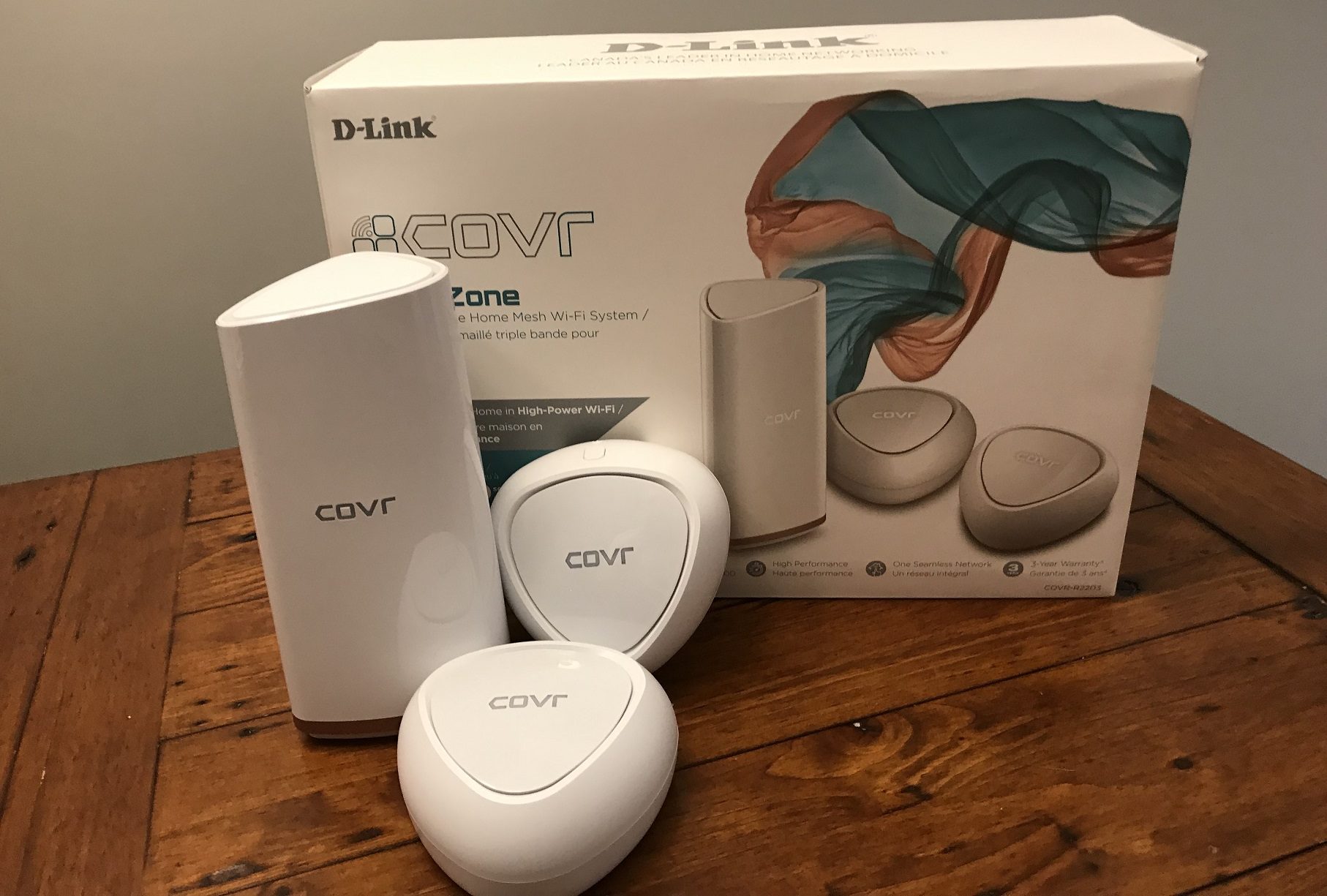 Is your home Wi-Fi network not exactly meeting your needs? Do you have full bars in one room of your living space, and then you walk 10 feet away and suddenly it’s like you’re using dialup internet? Does your family constantly complain about not getting good Wi-Fi reception? Trust me, you (and your family) will want to read my review of the D-Link Covr Powrzone Whole Home Mesh Wi-Fi System (by the way, that is not a typo, D-Link just seems to be rationing the letter E these days).
Is your home Wi-Fi network not exactly meeting your needs? Do you have full bars in one room of your living space, and then you walk 10 feet away and suddenly it’s like you’re using dialup internet? Does your family constantly complain about not getting good Wi-Fi reception? Trust me, you (and your family) will want to read my review of the D-Link Covr Powrzone Whole Home Mesh Wi-Fi System (by the way, that is not a typo, D-Link just seems to be rationing the letter E these days).
Wi-Fi range issues
I’m actually really glad I was asked to do this particular review. For the past few months, my family has been complaining about the strength of the Wi-Fi signal in our two-level townhome. After my really good router gave up the ghost, I decided I would just go with whatever router my internet supplier provided, as they touted it as an “advanced router.” It certainly provides the speeds advertised, but it has terrible range. You get almost no reception in a powder room just 25 feet away from the router itself. And, while I get full Wi-Fi in my own bedroom, my daughter’s Apple TV almost never gets the signal in her room, and she can only use her phone’s Wi-Fi if she is sitting on one side of the bed. She also complains about videos that load super slow and FaceTime cuts out a lot. According to D-Link, this Covr Powrzone Mesh Wi-Fi System is going to fix all that.
What you need to know about routers
A traditional router has one band at 2.4Ghz. Wi-Fi AC usually has dual-band (2.4GHz and 5Ghz) and Tri-band, which adds an extra 5GHz band. Essentially, your router offers either one, two or three networks for you to use. Unfortunately, routers work best with line-of-sight and signals can get weakened or blocked due to walls, appliances and other things that are in the way of the Wi-Fi broadcast.
What is Mesh Wi-Fi?
A mesh Wi-Fi network comprises a smaller master router and one or more slave nodes that talk to each other. The theory is that the master can transmit a signal. The slave picks that signal up and re-transmits to client devices. If you have an apartment or smaller home on one level, Mesh Wi-Fi can work really well. If you have multiple levels the master typically needs line-of-sight visibility to all slaves and transmission distances should be kept to no more than 10 metres. It’s important to note that a Mesh Wi-Fi system doesn’t boost the speed of your internet. If you have horrible internet, this is not going to help, and may make things worse. The Mesh system simply provides a wider and more reliable Wi-Fi signal coverage for your home.
What do you get with the D-Link Covr Powrzone?
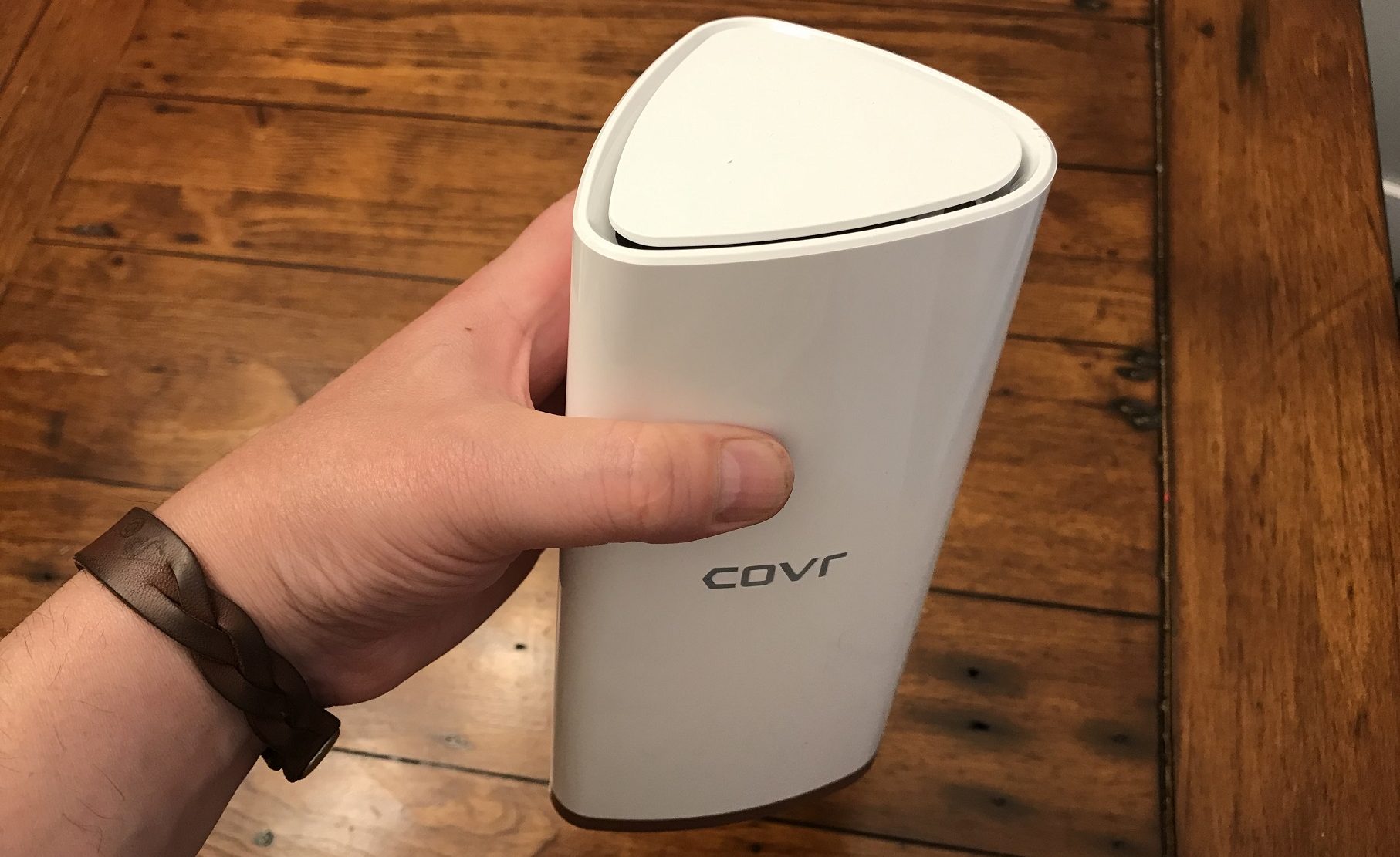 Neatly and securely packed within the box, you’ll find one master Covr unit and two smaller satellite units, as well as three power cables, an ethernet cable and the usual warranties and quick start guides. The main base unit is a triangular mini tower that’s about 7 inches tall and is made of shiny white plastic. It has two ethernet ports and a power jack underneath, as well as an on/off button. An LED backlit Covr logo on the front of each unit tells you what is going on with your network: It’s white when the node has a strong connection, blinks white when the connection is weak or when the node is using WPS to connect to a client, turns red when the node is booting up, and blinks orange during setup. The two slave units resemble thick, triangular hockey pucks, and they also have the LED Covr logo on the top.
Neatly and securely packed within the box, you’ll find one master Covr unit and two smaller satellite units, as well as three power cables, an ethernet cable and the usual warranties and quick start guides. The main base unit is a triangular mini tower that’s about 7 inches tall and is made of shiny white plastic. It has two ethernet ports and a power jack underneath, as well as an on/off button. An LED backlit Covr logo on the front of each unit tells you what is going on with your network: It’s white when the node has a strong connection, blinks white when the connection is weak or when the node is using WPS to connect to a client, turns red when the node is booting up, and blinks orange during setup. The two slave units resemble thick, triangular hockey pucks, and they also have the LED Covr logo on the top.
Setting up the D-Link Covr Mesh Wi-Fi System
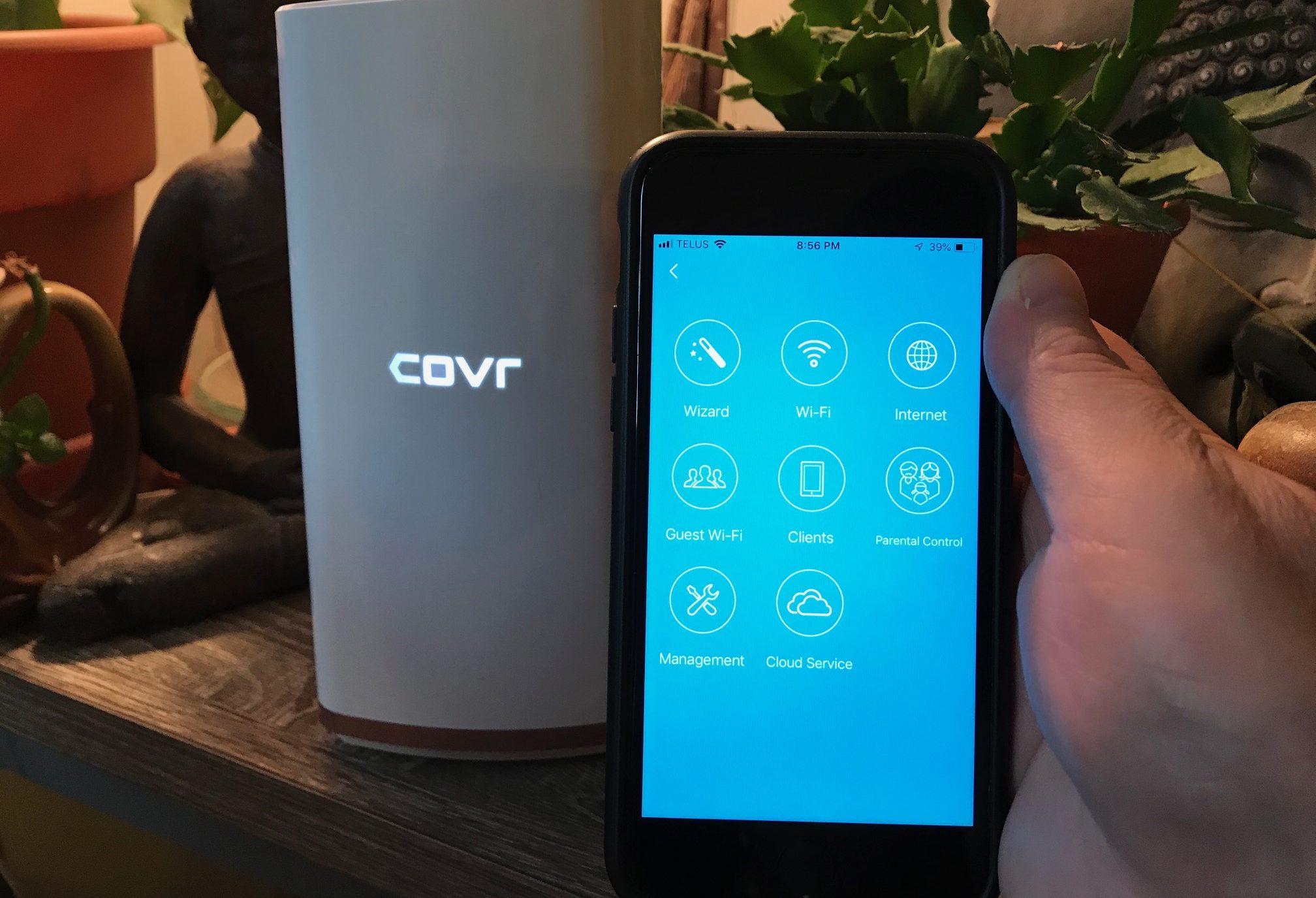 You can set up the system using a D-Link app on your smart device or using a browser on your PC or Mac. Either way, it will take up to 15 or so minutes to get everything set up. I went for the app, which does a pretty good job of guiding you through the whole process.
You can set up the system using a D-Link app on your smart device or using a browser on your PC or Mac. Either way, it will take up to 15 or so minutes to get everything set up. I went for the app, which does a pretty good job of guiding you through the whole process.
I have to say I was relieved I did not have to call my internet service provider to “bridge” this router to my existing network, as I’ve had to do when testing other router products. You don’t need to talk with anyone, just follow the prompts on your phone. Essentially, you connect the bigger unit by ethernet cable to your existing router (powered down of course), then you boot it up to connect and then create a new network that will be broadcast to a wider range in your home through the two slave units. Once the network is created, you place and plug in the satellite units where you are having connection issues, boot it all up again, and you should have more internet coverage for your living spaces.
D-Link Covr Powrzone Mesh Wi-Fi performance
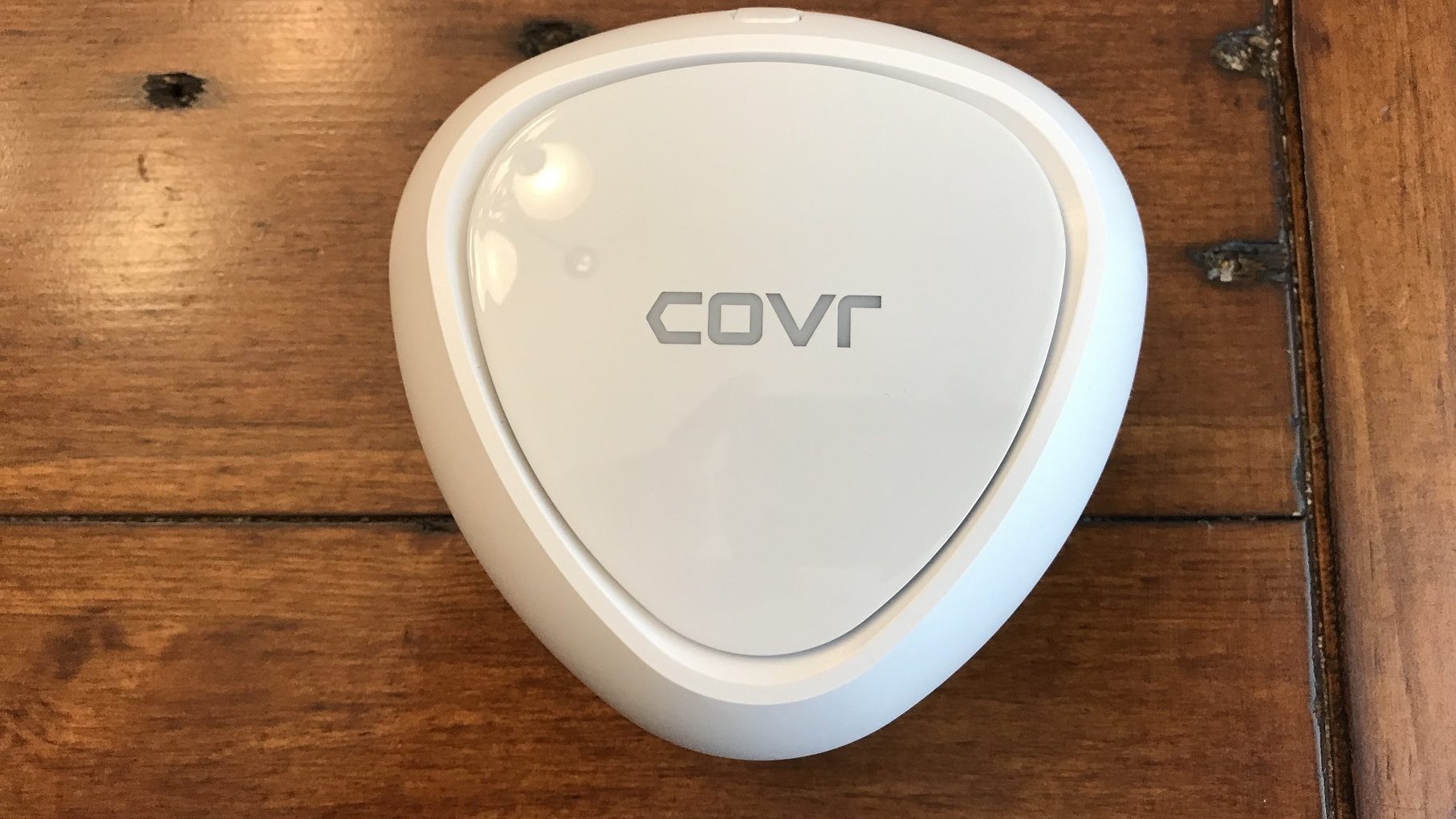 “OMG my Apple TV works now and all the videos on YouTube load up super fast now,” exclaimed my daughter after I got the D-Link Covr Powrzone Mesh Wi-Fi System up and running. I placed one slave unit at the top of the stairs near her bedroom and one downstairs near the front door and powder room. I then proceeded to walk around my house, going into every room, every closet and every nook and cranny. I even went out to my garage, which is a considerable distance from my main router, and full of “obstacles” that would block a Wi-Fi signal, like hanging bikes, metal tools, and all sorts of extra building materials stacked everywhere along the walls. I had full bars for Wi-Fi everywhere, even in the garage. I guess I shouldn’t have been surprised, considering the Covr promises to deliver a Wi-Fi signal for up to 6,500 square feet, and my home is nowhere near that big. So, it works, and it works really well.
“OMG my Apple TV works now and all the videos on YouTube load up super fast now,” exclaimed my daughter after I got the D-Link Covr Powrzone Mesh Wi-Fi System up and running. I placed one slave unit at the top of the stairs near her bedroom and one downstairs near the front door and powder room. I then proceeded to walk around my house, going into every room, every closet and every nook and cranny. I even went out to my garage, which is a considerable distance from my main router, and full of “obstacles” that would block a Wi-Fi signal, like hanging bikes, metal tools, and all sorts of extra building materials stacked everywhere along the walls. I had full bars for Wi-Fi everywhere, even in the garage. I guess I shouldn’t have been surprised, considering the Covr promises to deliver a Wi-Fi signal for up to 6,500 square feet, and my home is nowhere near that big. So, it works, and it works really well.
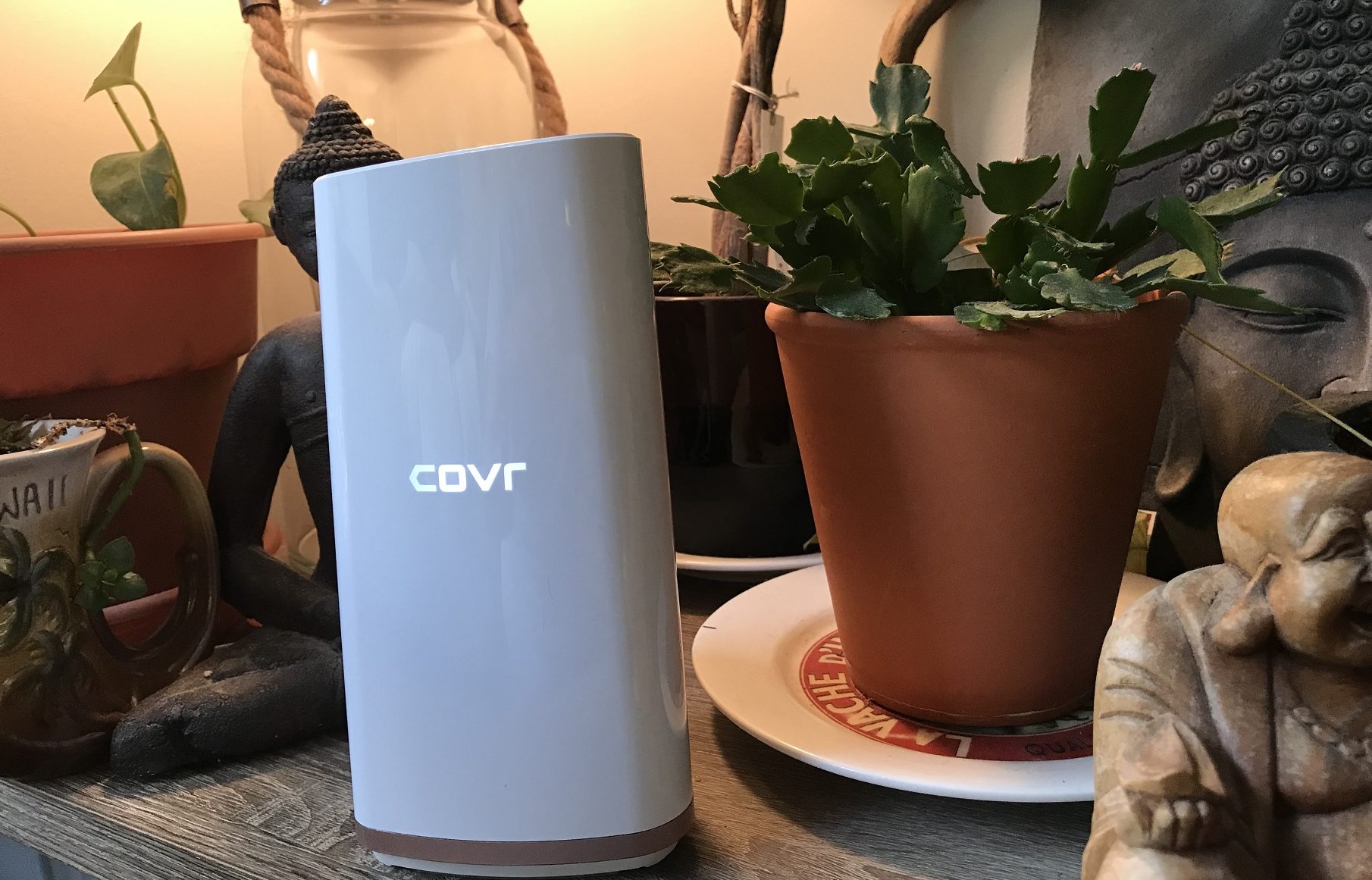 In addition to just plain working great, the D-Link Covr Mesh System also allows you (through the app or browser) to do things like create a guest network for visitors, and have parental controls that allow you to block Internet access at specific times so that the kids can’t stay up watching YouTube all night long. It also offers support for Alexa and Google Assistant devices so you can control things like your guest network with your voice.
In addition to just plain working great, the D-Link Covr Mesh System also allows you (through the app or browser) to do things like create a guest network for visitors, and have parental controls that allow you to block Internet access at specific times so that the kids can’t stay up watching YouTube all night long. It also offers support for Alexa and Google Assistant devices so you can control things like your guest network with your voice.
So, would I buy one? Yes. Absolutely. It solved all my family’s connection issues, and everyone is now asking me to pick one up for the home. You can check out the D-Link Covr PowrZone Tri-Band Mesh Wi-Fi System online at Best Buy, as well as other home mesh Wi-Fi systems.

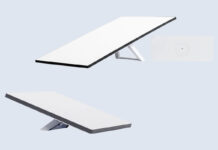
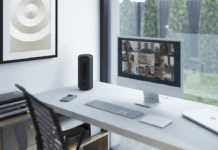

we definitely need the D-Link AC2200 Whole Home Mesh Wi-Fi System (COVR-R2203) because i can put one in each room and not worry anout wiring.
good job
That’s pretty neat! My current place is rather small so at this point I don’t need it, but I’ll definitely keep it in mind for the future!
Comments are closed.